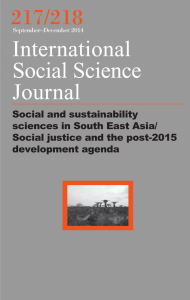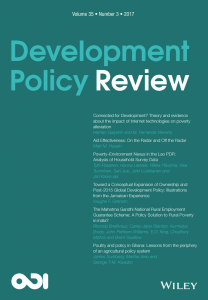Cochlear Implants: Miracle Technology or Cultural Genocide?
Deafness and hearing loss is a condition or state of being whose meaning is contested. The biomedical, or infirmity, understanding of deafness is that hearing loss is a disability that, in many cases, can be cured or ameliorated through advanced technological devices and procedures, including surgery and internal and external prostheses. The newest of these technologies, cochlear implants, can help a deaf infant hear and speak in almost the same way as a hearing person.
As opposed to the biomedical model, a cultural understanding of deafness understands deafness to be a physiological difference around which a rich linguistic and cultural heritage has evolved. The cultural model does not understand deafness as something to be corrected, but rather as a natural, unproblematic state. Deaf proponents of the cultural understanding of deafness identify as members of a linguistic minority and culture group, referred to as the Deaf-world.
It is tempting to reify physical conditions, such as deafness, as “real” biological entities that are outside the influence of social forces. Reification is the social process of attributing absoluteness and naturalness to the purely conventional, and carries with it the risk that reified processes appear to lose their social character. Reification turns human products into something other than human products, such as facts of nature, thereby allowing humans to forget their own authorship of the phenomenon in question. Because of the biological nature of physical abilities such as hearing, specialists and laymen alike forget the purely conventional and social nature of disability classifications, and instead attribute a profound natural power to these categories. As a result of this flexibility, bodies themselves are a highly contested space, in which competing cultures vie for the right to define and sculpt that body. Defining a body as disabled or abled does not occur in a vacuum, nor is it an automatic classification; instead, it is always in contrast to the normal that the abnormal is understood.
In the contemporary era, an adult or child is first identified as hearing or deaf through audiometric testing. In 2006, 96% of American newborns received their first audiometric test within hours of birth (National Center for Hearing Assessment and Management 2009). At the point of being so labeled, an individual or parent is faced with two broad options. They can chose to incorporate the infirmity model of deafness into one’s own world view and, accordingly, seek hearing and speaking correction in an attempt to conform and achieve normality. Those who adopt corrective technologies such as the cochlear implant in an attempt to conform affirm that deafness is in fact a disability that can and should be corrected. Alternately, one can resist the conforming process, thereby resisting the label and the association of deafness as a disability in need of correction.
 The affirmation of the infirmity understanding of deafness leads to the search for new and better technologies to address deafness, including stem cell research and gene transfer therapies that aim to ultimately eliminate the birth of deaf infants. This work is done partially to eliminate the stigma of deafness. These advanced techniques, if “successful,” will have the effect of regulating and eventually eliminating Deaf culture, language, and Deaf people altogether. These attempts are seen by those adopting a cultural understanding of deafness as parallel to eugenics or genocide. Although the term eugenics implies the reduction or elimination of deafness through compulsory exogamous marriage and sterilization or through gene therapy, genocide evokes a more active attempt to eliminate a group of people or a culture. The word genocide recalls vast pogroms and systematic killing, however, the slow elimination of a minority group can occur by the destruction of the distinct elements that bind the collectivity, such as language, customs, and art forms. Because the infirmity model of deafness aims to eliminate the need for American Sign Language (ASL), the loss of this language could result in the loss of the culture itself. In this way, language death, or glottocide, can lead to the loss of cultural identity, and may represent the denial of the basic human and civil rights of children to speak their native language.
The affirmation of the infirmity understanding of deafness leads to the search for new and better technologies to address deafness, including stem cell research and gene transfer therapies that aim to ultimately eliminate the birth of deaf infants. This work is done partially to eliminate the stigma of deafness. These advanced techniques, if “successful,” will have the effect of regulating and eventually eliminating Deaf culture, language, and Deaf people altogether. These attempts are seen by those adopting a cultural understanding of deafness as parallel to eugenics or genocide. Although the term eugenics implies the reduction or elimination of deafness through compulsory exogamous marriage and sterilization or through gene therapy, genocide evokes a more active attempt to eliminate a group of people or a culture. The word genocide recalls vast pogroms and systematic killing, however, the slow elimination of a minority group can occur by the destruction of the distinct elements that bind the collectivity, such as language, customs, and art forms. Because the infirmity model of deafness aims to eliminate the need for American Sign Language (ASL), the loss of this language could result in the loss of the culture itself. In this way, language death, or glottocide, can lead to the loss of cultural identity, and may represent the denial of the basic human and civil rights of children to speak their native language.




1475-6781/asset/JSS.gif?v=1&s=377bb8e0c3d0fcf201f301ded7cf610142072c3e)
genocide ?? This is a staggeringly inappropriate use of the word. The victims of genocide would understandably wish to avoid being killed. How many deaf individuals could be found who truly do not wish to be able to hear ? Who would actively avoid being cured ? Can you find one deaf mother who doesn’t long to hear her baby cry, or to hear her grown son tell her how much he loves her ? As for the absurd notion that ‘The cultural model does not understand deafness as something to be corrected, but rather as a natural, unproblematic state’ , how unproblematic is it not to be able to hear sirens and approaching vehicles when you’re bicycling or jogging down the road ? Not to hear the footsteps of the guy who might be about to mug you ?
//How many deaf individuals could be found who truly do not wish to be able to hear ? Who would actively avoid being cured ? Can you find one deaf mother who doesn’t long to hear her baby cry, or to hear her grown son tell her how much he loves her ?//
Lots of them. But millions of people also believe that the meaning of life comes from death, and would reject immortality.
Doesn’t mean they’d actually choose death if they had grown up in a society of immortals, any more than the Deaf would choose to lose their hearing had they been born with hearing.
Haha, oh grad school, what have you come up with … genocide, really? I wonder if you’ve asked deaf people if they’d rather hear or not. No, I think the application of “genocide” is rather paternalistic.